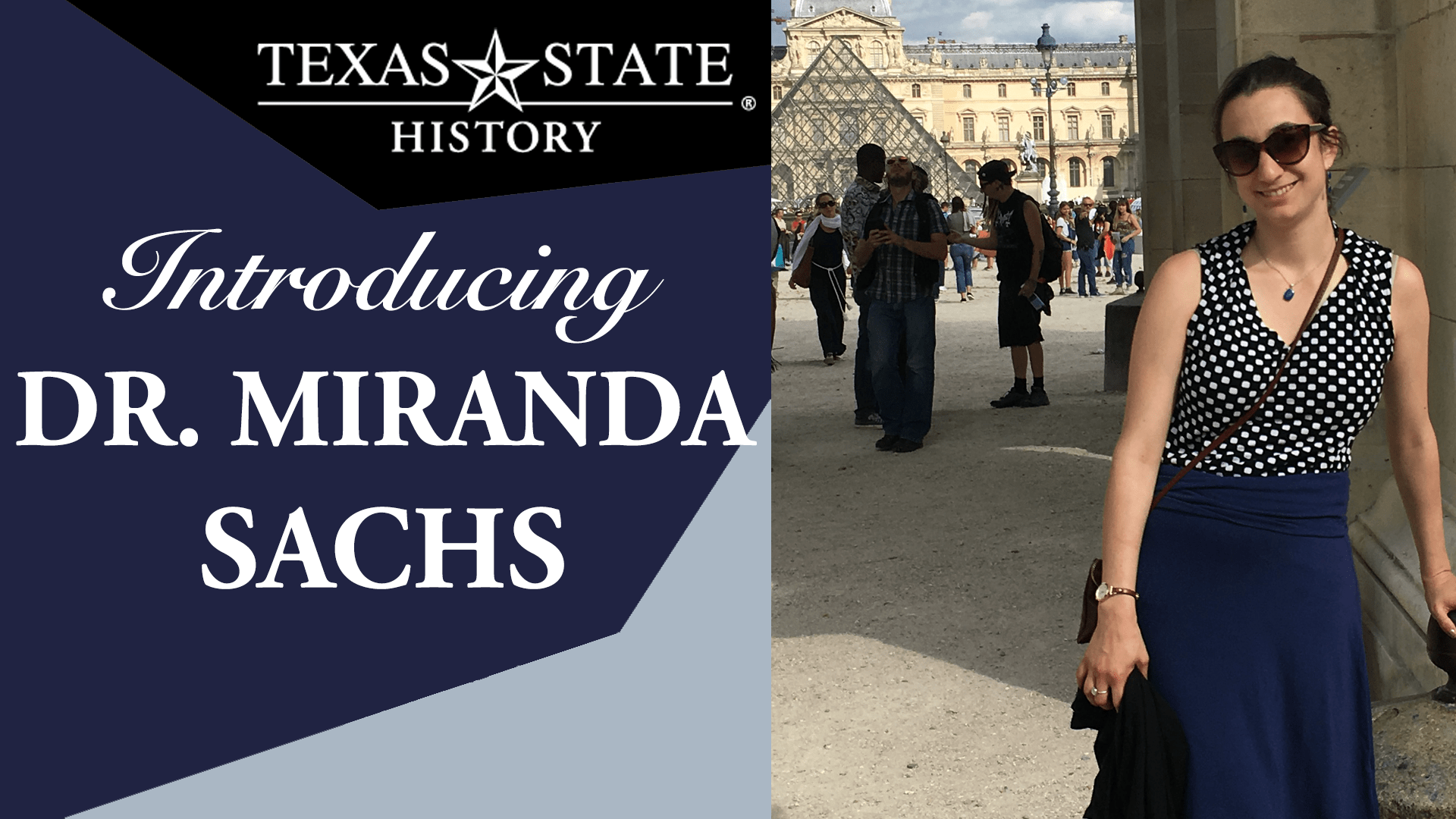
We welcome Dr. Miranda Sachs to Texas State this semester! Dr. Sachs specializes in European history, with a focus on France, women and gender, childhood and youth, and immigration.
I had one of the best campus jobs imaginable as an undergraduate. My university had a special library dedicated to rare children’s books. The shelves of old books shared the space with a unique children’s room. I was first hired to help organize programs for kids. My job included writing a quest with rhyming clues, telling jokes while dressed as a Victorian lady, and gluing plastic salamanders on visors for a Holes watching party. But later I got to help the librarians tasked with working with the books. The collection is amazing! They have scrapbooks created by Hans Christian Anderson, the man who wrote “The Little Mermaid.” They have some of the first children’s books. These books are the size of a deck of cards and are over three-hundred-years old. They have lithographic stones that were used to print toy theaters in the nineteenth century. The stones are about the size of a laptop, but so much heavier.
One day while I was helping shelve books, I noticed an ABC book on World War I. I was already excited about European history, but this book got me thinking. What if I did my senior research project on the history of children in World War I? I had never thought about children as a topic to study, but the more I thought about it, the more I wanted to know. What was war like for the children who lived through it?.
Since then, I’ve studied and taught the histories of childhood and youth. My research looks at the experience of working-class children in nineteenth-century Paris. I am particularly interested in how childhood came to be a distinct stage of life. How and why did childhood become a time when young people are expected to be in school and dependent on their parents? I enjoy teaching about the history of childhood, because most students don’t expect children and childhood to have a history. We also don’t expect high school yearbooks or children’s drawings to be historical sources. If that sounds interesting, I will be teaching a class on “The Global Teenager” in the spring!
When I’m not studying history, I cheer on the San Francisco Giants and search for the best hot chocolate in the world. My favorites so far include Jacques Genin in Paris and City Bakery in New York, but I’m always looking for new recommendations!
